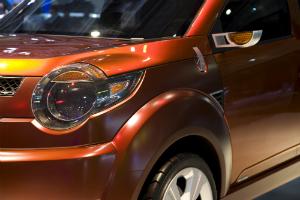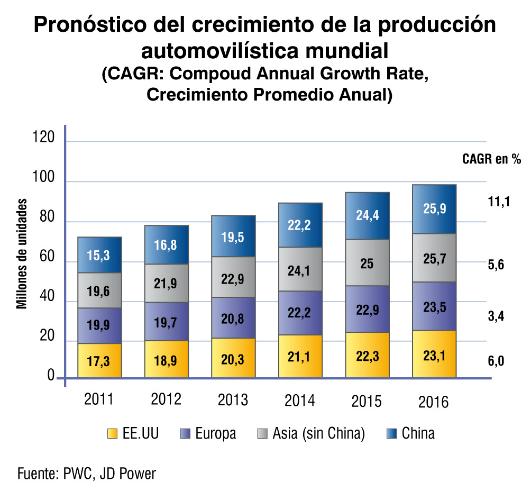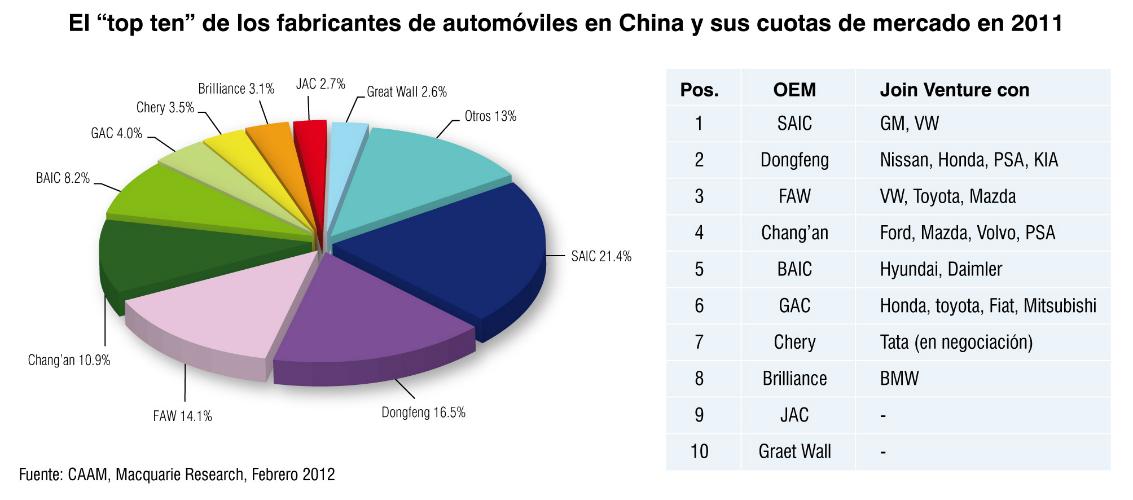 Taking as a reference the evolution of the Chinese automotive market, the author shows us the growth of the automotive sector and the new trends in paints for this industry.
Taking as a reference the evolution of the Chinese automotive market, the author shows us the growth of the automotive sector and the new trends in paints for this industry.
by Pavel Svejda*
In China, both the economy in general and the automotive market in particular have been growing faster for years than in other regions of the world. Consequently, numerous new car factories equipped with the most advanced manufacturing technologies are being built there.
In the area of surface treatment technologies, this implies new compact painting processes, full automation, energy efficiency and resource conservation. That this is not only a saying is demonstrated by the situation. The paint plant with the lowest energy consumption per painted body worldwide will begin operations next year in the Asian nation.
China, a country almost as large as the United States of America, is, with more than 1.3 billion inhabitants, the most populous on the planet, and is considered economically as the No. 2 in the world.
With an economic growth of 9.2% in 2011, exceptional from the perspective of other economies (for example: Germany in 2011: 3.0%), 48% of the Gross Domestic Product comes from industry, 42% is generated in the services sector, followed in third place by agricultural production. China, a country that is among the so-called BRIC countries (BRIC: Brazil, Russia, India, China) has established itself as the emerging economic power par excellence.
The rapidly expanding Chinese car market in recent years calmed slightly at a high level in 2011. The main reason for this trend was government intervention, which "strangled" economic growth a bit to limit inflation. Automakers, however, continue to demonstrate their confidence in the Chinese market, investing billions in building new production capacities.
According to PWC automotive experts (PWC: PricewaterhouseCoopers), Chinese production of light vehicles in 2011 increased by 600,000 units or 4.2%. This corresponds to about double the growth value of Western Europe (2011: 300,000 units or 2.3%).

Many data indicate that the car market in China will continue to grow above average in the coming years, due to rising real incomes and the growing need for individual mobility. By way of comparison: while in Germany there are currently 500 cars per 1,000 inhabitants, in China there are less than 50 – this reveals a huge cumulative demand. In this context, PWC forecasts that car production in China between 2011 and 2016 will grow by more than 11 million units.

Chinese automakers are no longer just subject to the domestic market. The eastern country's car export in 2011 was 824,000 vehicles, an increase of 50% over the previous year. However, so far, the main customers come only from emerging countries.
Vehicle painting
This in terms of statistics. But what is the situation in China in relation to car painting? A common goal of all Chinese automakers and Joint Ventures (partnership between two or more companies) is to produce with maximum energy efficiency.
To achieve this goal there are several options. Among these, the most important are the painting process, the conception of the layout of the production line, as well as the plant and application systems that, according to the investment budgets of the OEMs, can be implemented separately or in combination.
But let's go step by step. In the mid-nineties, a fundamental change revolutionized car painting. A manufacturer from South Germany was the first to implement a "reduced" water-soluble paint application process in its new series of cars. In this context, reduced means that the properties of the primer are transferred to the base layer, eliminating the conventional primer application and with it also the primer line. It sounds easy, but it really wasn't.
Compact painting process
It was a true pioneering work, possible only through a close collaboration between the three parties involved: the user, the manufacturer of painting materials and the supplier of the installation. Initially, reactions to this innovation were relatively moderate. Gradually, other manufacturers also ventured to apply this technology and different variants appeared, which today are known as "compact painting process".
At present, virtually all major automakers use this process. The advantages? Reduction of investment, required space and energy consumption. The compact painting process has been established even in the Premium class. But back to China. Also there this painting process is applied in various forms.
Note: In the second part of this article you will find the continuation of the different and new automotive painting processes.
* Dr.-Ing. Pavel Svejda represents Dürr Systems GmbH, and can be contacted at the email [email protected]
























Leave your comment